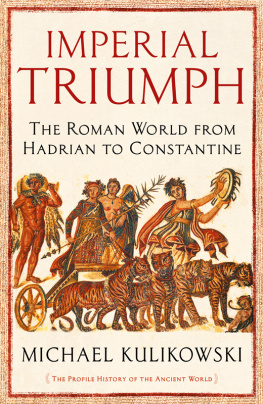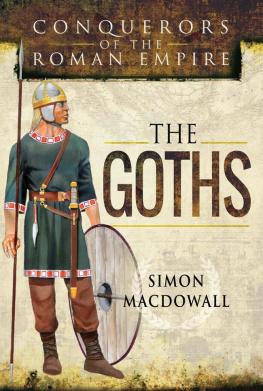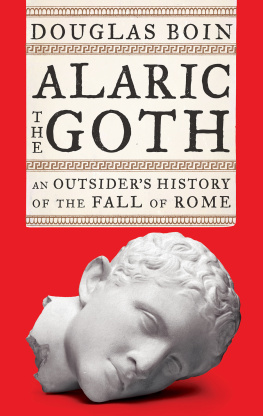This series is composed of introductory-level texts that provide an essential foundation for the study of important wars and conflicts of classical antiquity. Each volume provides a synopsis of the main events and key characters, the consequences of the conflict, and its reception over time. An important feature is the critical overview of the textual and archaeological sources for the conflict, which is designed to teach both historiography and the methods that historians use to reconstruct events of the past. Each volume includes an assortment of pedagogical devices that students can use to further their knowledge and inquiry of the topics.
CAMBRIDGE UNIVERSITY PRESS
Cambridge, New York, Melbourne, Madrid, Cape Town, Singapore, So Paulo
Cambridge University Press
32 Avenue of the Americas, New York, NY 10013-2473, USA
www.cambridge.org
Information on this title: www.cambridge.org/9780521846332
Cambridge University Press 2007
This publication is in copyright. Subject to statutory exception
and to the provisions of relevant collective licensing agreements,
no reproduction of any part may take place without
the written permission of Cambridge University Press.
First published in print format 2007
ISBN-13 978-0-511-25126-9 mobipocket
ISBN-10 0-511-25126-2 mobipocket
ISBN-13 978-0-521-84633-2 hardback
ISBN-10 0-521-84633-1 hardback
Cambridge University Press has no responsibility for the persistence or accuracy of URLs for external or third-party Internet Web sites referred to in this publication and does not guarantee that any content on such Web sites is, or will remain, accurate or appropriate.
For T. D. Barnes and Walter Goffart
Acknowledgements
To quote with approval Geoffrey Elton at the beginning of the twenty-first century may seem perverse, even lunatic. Yet for all that Elton was (to borrow a phrase from Averil Cameron) a dinosaur of English positivism, his Practice of History got one thing absolutely right: the historian has a duty to make history intelligible and, however complex the past may have been, there is nothing in it that cannot be explained to any audience if only we choose the right words. This book aims to do no more than that, to make the first two centuries of Romano-Gothic relations comprehensible to everyone student, scholar, and aficionado alike and to explain why, for the specialist at least, Gothic history remains a subject of painful controversy. As an aid to readers for whom this material is unfamiliar, I have included glossaries of persons named in the book and of ancient authors used, and while specialists may find that my citations of primary sources are insufficiently abbreviated, I hope it will help those who are just beginning the advanced study of late antiquity to easily locate the texts I have used.
Even in a book so short, one incurs debts of gratitude to family, friends, and colleagues. I have long relied on my father and my wife for first reactions to my work, and both have read this text, parts of it repeatedly. Andrew Gillett read the whole book in draft; Guy Halsall, Andy Merrills, and Philipp von Rummel each read several chapters; all saved me from error and gave me much food for thought. Sebastian Brather, Florin Curta, and Noel Lenski advised on points of detail and Dr. Alexandru Popa provided me with a copy of his invaluable but in North America inaccessible work on the stone architecture of the barbaricum . Beatrice Rehl offered sympathetic editorial guidance throughout. Final work on the volume took place while I held a Solmsen Fellowship at the Institute for Research in the Humanities at the University of Wisconsin, Madison. The maps were drawn by the Cartographic Services Laboratory at the University of Tennessee, under the direction of Will Fontanez, and I am grateful to the Department of History for the subvention which allowed them to be produced at short notice.
I owe my interest in this topic to the Gothic and Roman halves of my education. Tim Barnes and Walter Goffart taught me different things about studying late antiquity, but without them I would neither have wanted, nor been able, to write the volume which I now dedicate to them.
Before the Gates of Rome
Late in August 410, a large troop of soldiers bore down on the city of Rome. At their head rode the general Alaric, in the full insignia of a magister militum . It was the highest command in the Roman army, won after years of politicking and military success. But Alaric was more than a Roman general. He was also a Gothic chieftain, some might have said a king. As far as contemporaries were concerned, the soldiers who followed him were Goths. Sometimes, to be sure, Alaric had put his followers at the service of the Roman emperor. When he did so, they became a unit in the Roman army. But their loyalty was to Alaric, not to the emperor or the empire, and everyone knew it. Alaric might be a Roman general, but no one ever mistook his followers for Roman soldiers. They were the Goths, and Alaric had led them against regular imperial armies more than once. In the early fifth century, the line between Roman regiment and barbarian horde was a fine one, and Alaric straddled it as best he could. But no one was quite taken in by appearances, and Alaric never succeeded in turning himself into the legitimate Roman commander he so desperately wanted to be.
But he had come very close, to within a hairs breadth of achieving everything a barbarian commander could hope for: a place in the empires military hierarchy for himself, permanent employment for his followers, food and land and security for their wives and children. Yet each time he had been on the verge of grasping everything he wanted, something had gone terribly wrong, negotiations had broken down, someone he had relied on had betrayed him. For fifteen years he had led his men, and for fifteen years most had remained loyal, through the ups and downs of constant negotiation and occasional battle, through the endless marching from the Balkans to Italy, from Italy to the Balkans, and back again. All that was over now. Alaric could contemplate no further delay, no further negotiation. He was in a fury, his patience finally at an end. It was true that he had never been a patient man. As he himself had recognized at least once, his failures were not always someone elses fault: at times his rage had got the better of him, and he had stormed away from the negotiating table too soon, when a little forebearance might have carried the day. This time, though, it had not been his fault. He had bargained in good faith with the emperor and he had gone all the way to Ravenna to do so, instead of insisting on meeting at Rimini, in between Rome and Ravenna, as he had done in the past. He had, in fact, done everything that was asked of him. And it had made no difference. He and his men had been attacked, a surprise assault, with no warning and no quarter.
With that, Alaric decided, the emperor had proven once and for all that he could not be trusted. The emperors name was Honorius, but he had honoured few of the agreements he made with Alaric. Besides, he was a weakling and an incompetent, rumoured to be a half-wit even by those who wished him well. Holed up in the coastal town of Ravenna, safe behind marshes and causeways and readily supplied by sea, he was unreachable and the workings of his court inscrutable. Indeed, for the past two years, it had been impossible for anyone, least of all Alaric, to be certain which of Honorius many courtiers really controlled him, which could really deliver on the promises made in his name. It had not always been thus, for while Honorius father-in-law, the patrician Stilicho, was alive and in charge, Alaric had a negotiating partner he could trust, more or less. But Stilicho had been dead for two years, murdered, and the cabal of treacherous bureaucrats that replaced him had never spoken with a single voice.










